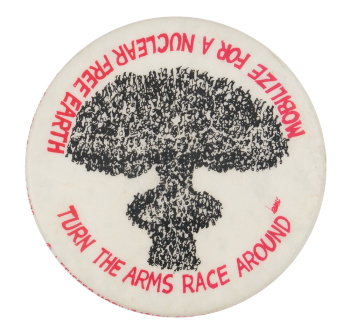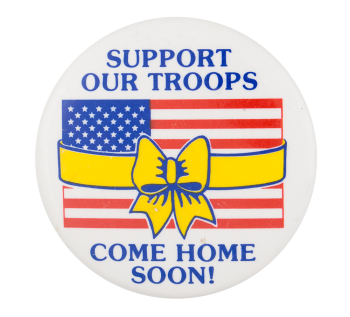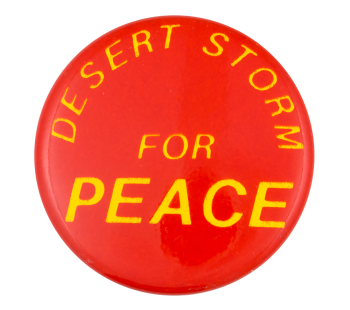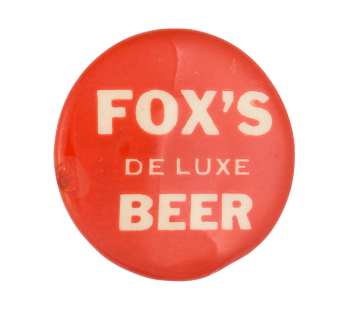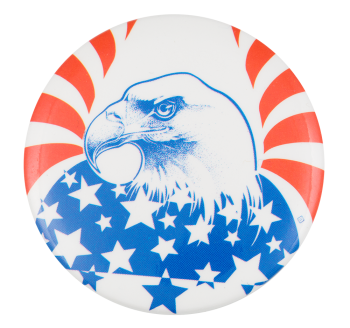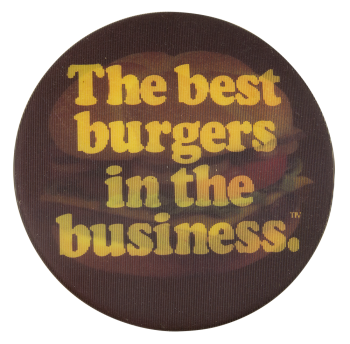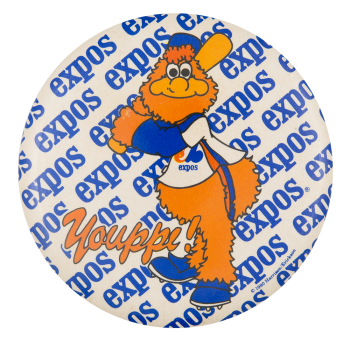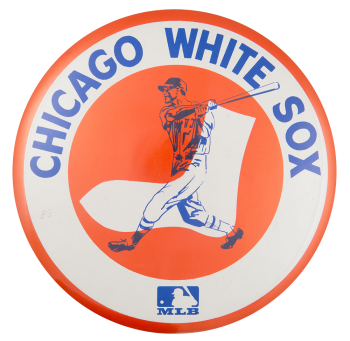Turn the Arms Race Around
| Category | |
|---|---|
| Additional Images | |
| Sub Categories | |
| Text on Button | MOBILIZE FOR A NUCLEAR FREE EARTH TURN THE ARMS RACE AROUND |
| Image Description | Illustration with red text around the outer edge |
| Curl Text | ©J.. FEIFFER MOBILIZATION FOR SURVIVAL, 1213 RACE ST., PHILA., 19107 union bug DONNELLY/COLT BUTTONS BOX 271 NEW VERNON, N.J. 07976 |
| Back Style | |
| The Shape | |
| The Size | |
| The Manufacturer | |
| Additional Information | Mobilization for Survival was a national organization that was dedicated to fighting for peace and social justice. Founded in 1977, they sought to abolish nuclear weapons, stop the arms race, and stop military intervention. They supported smaller grassroots and community based organizations by providing resources and education until their dissolution in 1992. |
| Catalog ID | CA0652 |

